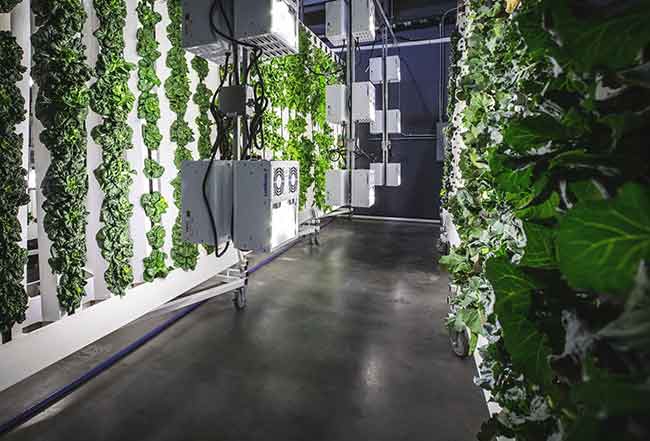
Features
Greenhouses
Structures & Equipment
Indoor Farming a New Trend
Growers Have Many Choices in Tapping Commercial Urban Ag Market
December 9, 2015 By Amy Storey
 Commercial urban farming, including the ZipFarm system, is attracting considerable attention.
Commercial urban farming, including the ZipFarm system, is attracting considerable attention. January 2016 — Humans have been growing crops in barren places for decades. Now it’s time to take our plant production knowledge and use it to provide our cities and food deserts with fresher and more local food.
Commercial urban farming may be in a greenhouse, a warehouse, or even a shipping container. Regardless of where they are growing, urban farmers who want to make a profit have to take their nontraditional growing techniques and modify them to increase margins. The key to doing this lies with new technology now available to farmers.Farmers who want to build sustainable, long-term businesses need to make a profit. There are two sides to this coin. Let’s take a look at the first side: increasing revenue.
Increase revenue by delivering higher-quality produce. Most urban farmers are also local farmers; their markets are located close to where the produce is actually grown. This saves the farmer the costs of transportation and increases the quality of the produce delivered to consumers.
By the time it hits the grocery store, farmers’ market or CSA baskets, urban produce is fresher and more flavourful than non-urban produce.
Increase revenue by making produce more desirable. How your produce is perceived seriously impacts your profit margins. One way to add to the appeal of your produce is to use a unique sales model. One exciting possibility is the Live Sales Model, in which produce brought to market is still growing in the equipment that grew it. This type of sales model brings forward consumers looking for hyper-fresh produce. It also offers special display options for restaurants, grocery stores, schools, and more. Many urban farmers (such as the Upstart Farmers) are using the live sales models with overwhelming success.
Use of modern equipment such as the ZipFarm™ and innovative techniques like Live Sales are the best way that we’ve found for urban farmers to grow their revenue.
The overlooked side of the margin coin is reducing costs. In urban settings, costs have a completely different profile. Urban farmers are growing in less space. To do this, and to do it year-round, urban farmers in northern climates will usually be growing indoors. Growing indoors means costs like artificial lighting, special climate control systems, and of course, labour.
Strategic workflow and low-maintenance equipment can cut labour costs by up to 60 per cent. Dr. Nate Storey designs farms that address this problem uniquely; they treat the farming process like a manufacturing process. “…Move the product to the process; let’s think about efficiency here,” Storey explains.
This type of setup allows farmers to cut time spent moving around the farm. An excellent example of this manufacturing in the ZipFarm. This equipment allows workers to unhook a whole rolling rack of live produce and roll it to the planting and/or harvesting stations to be planted or harvested. The rack, which is on wheels, perfectly facilitates workflow efficiency and reduces labour time.
This is just one example of how technology can facilitate higher revenue and reduced costs for modern farmers.
Bright Agrotech designs smart indoor farming solutions. The company has partnered with a total of 96 commercial farmers to bring their urban farming dreams to life.
Amy Storey is a content coordinator at Bright Agrotech, an agriculture technology business educating, equipping, and empowering farmers around the world to grow food with proven vertical growing techniques (www.brightagrotech.com).
Print this page